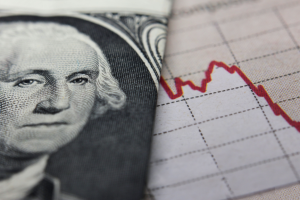
Since plunging during the summer, Nio (NYSE:NIO) stock slid lower. This is not surprising, given how the latest news and developments bode badly for the company’s future prospects. Many investors are optimistic about shares rebounding soon, as has happened several times in the past following any spark of good news.
Then again, this time, it may be different, and not in a good way. Given the headwinds with Nio’s current operations, not to mention rising uncertainty with future global growth plans, a sudden shift back to an upward trajectory may not be forthcoming for NIO.With this in mind, read on, as I reiterate why it’s best to stay bearish.
NIO Stock: 3 Reasons Why Investor Confidence is Sinking
With recent price action, there’s not one but multiple reasons driving the stock’s slow and steady drop. For starters, as I discussed a few weeks back, the company’s latest deliveries data suggests it is falling behind competitors in the Chinese EV market.
Rivals continue to report vigorous growth on a sequential (quarter-over-quarter) basis, yet Nio appears to be hitting a growth wall. Rising concerns about slowing growth are likely playing a role in the market’s de-rating of shares.
Second, tensions between the U.S. and China are also negatively affecting sentiment for NIO stock. This factor has been a big negative for U.S.-listed China stocks across the board. New tariffs and export controls may have less effect on Nio than on, say, Chinese tech companies like Alibaba (NYSE:BABA). This is hardly good news for anyone banking on Nio’s chances of ever penetrating the U.S. electric vehicle market.
Third, instead of helping to increase confidence about a turnaround, news of Nio laying off a tenth of its workforce has underscored the company’s longstanding issues with margins and profitability.
More Bad News Just Around the Corner?
Sure, it’s possible that Nio has a few positive surprises to reveal in the coming weeks. A few days from now, the company should release its November vehicle deliveries data. On Dec. 5, the company will report its fiscal results for the September quarter. Any bit of good news with either release would undoubtedly give NIO stock a boost.
Yet while positive surprises are possible, are they probable? I wouldn’t hold my breath.
The November deliveries report could always sound impressive on the surface, as did the October deliveries report. Year-over-year comps for Nio look very good, given that last year, deliveries were still being impacted by China’s “Zero Covid” lockdowns.
However, given that competition in its home market keeps heating up, as the China EV price war rages on, it’s hard to see Nio reporting strong sequential sales growth during November. Speaking of the price war and of competition, this factor points to disappointment ahead with Nio’s latest financial results.
In Nio’s Q2 2023 earnings release, the company’s margins shrank significantly. Net losses increased by a staggering 120%. While Q3 results may not end up being any worse than these numbers, continued cutthroat competition in China casts serious doubt the company will report higher margins/narrowing losses.
The Verdict
A year ago, when China’s post-Covid reopening was first taking shape, a growth resurgence for Nio’s Chinese operations was still uncertain, yet still well within the realm of possibility. Now, however, barring stunning improvements emerging out of left field, there’s little pointing to this EV maker shaking off its “also-ran” status.
Even worse, hopes of Nio becoming a global EV brand keep fading, and not only because of U.S.-China tensions. A European “love” of EVs could prevail over plans for an E.U. crackdown, but many of Nio’s larger Chinese rivals have already gained a large share of this market. The company’s total addressable market worldwide may be much smaller than expected.
As the situation still appears bleak, both in the near-term and long-term, steer clear of NIO stock.
NIO stock earns a D rating in Portfolio Grader.
On the date of publication, neither Louis Navellier nor the InvestorPlace Research Staff member primarily responsible for this article held (either directly or indirectly) any positions in the securities mentioned in this article.







